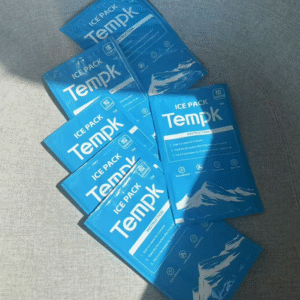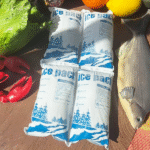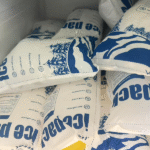How Much Does a Dry Ice Pack Cost? Factors Affecting Price and Choosing the Right Option
Are you considering the cost of dry ice packs for your shipping needs? In this guide, we’ll break down the pricing factors that influence dry ice pack costs, helping you make informed decisions when choosing the right solution for your cold-chain shipping requirements. Whether you’re shipping pharmaceuticals, perishable foods, or specialty items, understanding dry ice pricing is essential for managing shipping expenses effectively.

What Factors Influence the Cost of Dry Ice Packs?
-
Size and Weight of the Dry Ice Pack
-
Packaging Materials and Durability
-
Temperature and Duration Requirements
-
Shipping Location and Delivery Speed
Why is Dry Ice Pricing So Varied?
Dry ice pack costs fluctuate based on several factors that include the amount of dry ice, the type of packaging, and specific shipping needs. The weight of the dry ice used plays a crucial role in determining the price—more weight means higher costs, as more dry ice is required to maintain a lower temperature for a longer period.
Dry Ice Weight and Size
One of the most significant cost determinants for dry ice packs is the amount of dry ice needed. Larger shipments require more dry ice, and thus, higher costs. For example, a typical 24-cell sheet dry ice pack (about 5 lbs) is adequate for a 24-hour shipment, while larger shipments may require up to 10 lbs of dry ice, which increases the price significantly.
| Package Type | Dry Ice Weight | Usage Time | Average Cost |
|---|---|---|---|
| 24-cell sheet | 5 lbs | 24 hours | $15 – $30 |
| Medium dry ice pack | 10 lbs | 48 hours | $40 – $60 |
| Large dry ice pack | 20 lbs | 72 hours | $80 – $100 |
Packaging Materials and Durability
The type of packaging material used for the dry ice packs also plays a significant role in the cost. Mylar bags, for instance, are typically more expensive than Kraft paper bags but offer better insulation. When selecting dry ice packs, consider whether the packaging material meets your shipping duration and insulation requirements.
Temperature Requirements and Shipping Duration
Longer shipping times or extreme temperature requirements will raise the cost of dry ice packs. If your shipment needs to stay cold for more than 24 hours, you may need to use thicker bags or additional insulation, which increases both packaging and dry ice costs.
How Can You Reduce Dry Ice Shipping Costs?
Reducing dry ice pack costs involves a combination of optimizing shipment sizes, selecting appropriate insulation, and understanding local suppliers. Here are a few strategies:
-
Accurate Sizing: Avoid overestimating your dry ice needs. Ensure the pack matches the exact temperature duration required for your product.
-
Negotiate with Suppliers: Many suppliers offer bulk discounts, so if you ship large quantities frequently, negotiate for lower prices.
-
Select Efficient Insulation: Invest in high-quality insulation that maintains temperature effectively with minimal dry ice.
Choosing the Right Dry Ice Pack Size
Selecting the right dry ice pack size ensures you’re not wasting money on excess dry ice, nor risking product damage due to insufficient cooling. For short shipments (under 24 hours), smaller packs (5 lbs or less) are usually sufficient. For longer shipments, consider larger packs, but only if necessary to keep the product safe.
What Are the Different Types of Dry Ice Packaging?
There are several types of dry ice packaging solutions, each suited to specific needs. These include:
-
Standard Dry Ice Packs: Commonly used for small to medium shipments and less critical temperature maintenance.
-
Custom Insulated Bags: Ideal for specialized shipments requiring precise temperature control over longer periods.
Standard Dry Ice Pack Costs
Standard dry ice packs can range from $10 to $30 depending on the weight and packaging. These are suitable for most e-commerce businesses, pharmaceuticals, and food items with a 1-2 day shelf life.
Premium Insulated Dry Ice Packs
Premium packs, with enhanced insulation, cost between $40 and $100 or more. They are used for more demanding shipments where precise temperature control is crucial. These are perfect for medical supplies, vaccines, or gourmet food products that require extended shelf life.
Cost of Dry Ice for Shipping by Industry
-
Pharmaceuticals: Shipping medical supplies and vaccines typically requires more precise temperature control and specialized packaging, driving up costs.
-
Food and Beverages: Perishable items such as frozen foods or chocolates require well-maintained low temperatures, influencing packaging and dry ice selection.
-
E-commerce: Many e-commerce sellers use dry ice to ship temperature-sensitive products like cosmetics or premium foods, but typically, they balance cost and efficiency.
Are There Alternatives to Dry Ice for Shipping?
Yes, there are alternatives to dry ice that might be more cost-effective depending on your specific needs:
-
Phase Change Materials (PCMs): PCMs are ideal for maintaining a specific temperature for longer durations, without the extreme cold of dry ice.
-
Gel Packs: These are useful for less extreme temperature requirements and may be a more affordable option.
How Do Phase Change Materials Compare to Dry Ice?
Phase change materials, unlike dry ice, can maintain temperatures within a specific range, making them ideal for sensitive shipments that don’t require ultra-low temperatures. The cost can vary but generally, PCMs tend to be more affordable in the long run as they don’t sublimate as quickly as dry ice.
| Material | Temperature Range | Cost Comparison | Best For |
|---|---|---|---|
| Dry Ice | -78.5°C | Higher | Critical Cooling |
| Phase Change Material | -20°C to -25°C | Lower | Pharmaceuticals |
| Gel Packs | 0°C to 10°C | Lower | General Perishables |
How to Choose the Best Dry Ice Pack for Your Shipping Needs?
To choose the best dry ice pack, consider the following factors:
-
Duration of Shipping: If shipping longer than 24 hours, opt for larger packs or premium insulation.
-
Product Sensitivity: More sensitive items may require higher-quality packs.
-
Budget: Balance your need for cooling with your available budget.
2025 Trends in Dry Ice Shipping Costs
As we move into 2025, the cost of dry ice shipping is expected to evolve with new technologies and materials. Innovations in insulation technologies and more efficient dry ice production methods are anticipated to lower costs, especially in bulk. Moreover, the trend of sustainability is pushing the industry to explore greener alternatives to dry ice, such as eco-friendly phase change materials.
The Future of Dry Ice and Shipping Costs
-
Sustainability Focus: Expect more eco-friendly options to become available, driving a reduction in environmental impact while maintaining cooling efficiency.
-
Smart Shipping Solutions: Emerging technologies such as smart sensors will allow for better temperature monitoring, reducing the need for excessive dry ice usage.
Common Questions About Dry Ice Costs
How much does dry ice cost per pound?
Dry ice typically costs between $1.50 and $3.00 per pound, depending on location and the quantity purchased.
Can I reuse dry ice for shipping?
In some cases, dry ice can be reused if it hasn’t fully sublimated. However, it’s best to use fresh dry ice for critical shipments.
Conclusion: Understanding Dry Ice Pack Costs
In summary, the cost of dry ice packs is influenced by several factors, including size, packaging materials, and shipment duration. By understanding these variables, you can better manage shipping expenses while ensuring the safe delivery of your temperature-sensitive products. Keep an eye on evolving trends, such as sustainable options and smarter shipping technologies, to optimize costs further.
Get Expert Advice from Tempk
At Tempk, we specialize in providing custom cold-chain solutions, including dry ice packs, phase change materials, and temperature-controlled shipping solutions. Our products are designed to ensure the safe and cost-effective transportation of temperature-sensitive items.























